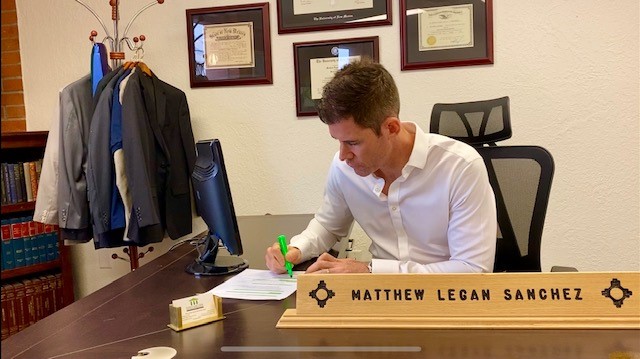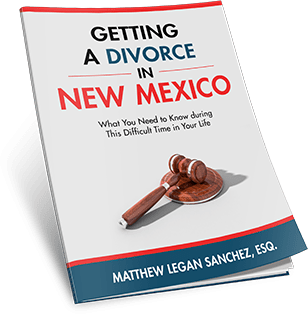
One of the most difficult aspects of a divorce is blindly walking through the process not knowing what to expect along the road. Today I want to cast light on the dark subject of divorce by outlining the steps that one should expect to encounter when moving forward for a divorce in Albuquerque, New Mexico.
All divorces are not created equally and vary in their degree of intensity depending on the complexity of the divorce. On one end of the spectrum there are uncontested divorces without children, debt, or personal property at issue. On the other end of the spectrum there are contested divorces where the parties’ are unable to reach an agreement on a number of issues including child custody arrangements, and the distribution of debts and assets.
For all levels of divorce New Mexico has a jurisdictional requirement that demands both parties to live in New Mexico for six months preceding the divorce for New Mexico to possess jurisdiction over the matter. Assuming that the parties’ meet this six month requirement, New Mexico is a “no fault state” which means that either party can unilaterally “Petition” the Court for a divorce for basically any reason, and one is not required to prove abandonment, abuse, adultery, etc. Typically the person seeking the divorce moves forward claiming “incompatibility” or “irreconcilable differences.”
Assuming that one can satisfy the jurisdictional requirements above, the first wave of the divorce process is generally the same whether your divorce is an uncontested divorce or a contested divorce.
In both instances, the process begins when the “Petitioner” files a Petition and Summons with the Court, and properly serves the other party – Respondent – with a copy of the Petition and Summons. The court will issue a Temporary Domestic Order, which is a Court Order that prohibits either party from engaging in behavior that affects the rights of the opposing party relating to the bank accounts, assets, debts, the children, the marital residence, etc. At this point the “Respondent” has 30 days to respond to the Petition or the Petitioner is awarded a Default Judgement.
With uncontested divorces the parties are able to resolve the matter outside of Court by reaching an amicable decision on issues such as child custody arrangements, and the division of assets and debts. The distribution of assets and debts is handled in the Marital Settlement Agreement, which is a legal document that is filed with the Court distributing the assets and debts according to the parties’ wishes.
Generally speaking, any assets and debts that are accumulated during the marriage are considered “community” and are spilt 50-50 between the parties. Regarding child custody arrangements, this portion of the divorce is handled in a document referred to as a Parenting Plan, where the parties’ can reach a determination on the appropriate system of custody.
Once the parties reach an agreement on the distribution of assets and debts – Marital Settlement Agreement – and the custody arrangement – Parenting Plan – the parties file these documents along with a Final Decree of Dissolution of Marriage with the Court to finalize the divorce.
Contested divorces occur when the parties’ are unable to agree on any number of issues, including the distribution of assets, debts, and the appropriate custody arrangements. Contested divorces add a wave of complexity to the matter and involve additional issues where the parties are forced to work with one another – typically through an attorney – to resolve issues such as: (1) Attorney Fees, (2) Interim Spousal Support, (3) Interim Custody Arrangements, (4) Distribution of assets – including businesses, vehicles, retirement accounts, IRA’s, personal & real property, etc., (5) Distribution of debts – including credit card debt, real and personal property with reverse equity, student loans, etc.
When the parties’ are unable to reach an agreement on these issues the Court will refer the parties’ to a settlement facilitation, with a trained facilitator such as Michael Danoff. At this facilitation, the parties and their respective attorneys will sit down with a skilled facilitator in an attempt to reach an agreement on the contested issues. The case will proceed to a trial on the merits when the parties’ are unable tor resolve contested issues during settlement facilitation.
Assuming that the parties are able to reach an agreement during settlement facilitation the facilitator will memorialize the agreement in the form of a stipulated agreement, filing this document with the Court along with a supplemental Marital Settlement Agreements or Parenting Plan, and a Final Decree of Dissolution of Marriage to finalize the divorce.
This is a basic road map of what to expect from beginning to end with the typical contested and uncontested divorce in Albuquerque New Mexico. Because no two marriages are the same, no two divorces will be identical either. Each divorce brings with it a host of emotions, and specific facts relating to that particular case.
(505) SANCHEZ IS HERE TO ANSWER ANY QUESTIONS ABOUT THE STEPS TO COMPLETE A DIVORCE IN ALBUQUERQUE, NEW MEXICO
Do you still have questions about the steps to complete a divorce in Albuquerque, New Mexico? Finalizing a divorce in Albuquerque, New Mexico often requires the experienced hand and knowledge that comes with years of courtroom practice. Matthew Legan Sanchez has the experience needed to handle your unique case. Sanchez can be reached by calling (505) SANCHEZ.

Steps to complete a divorce in Albuquerque New Mexico.






